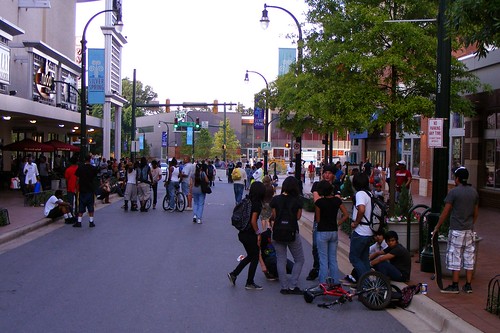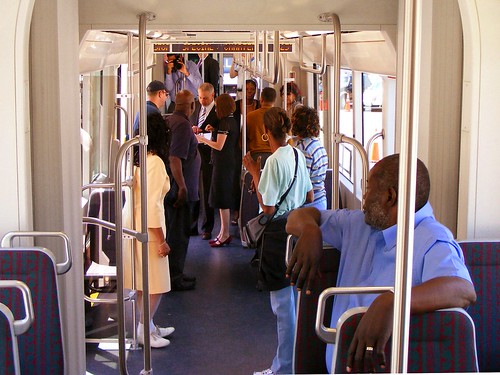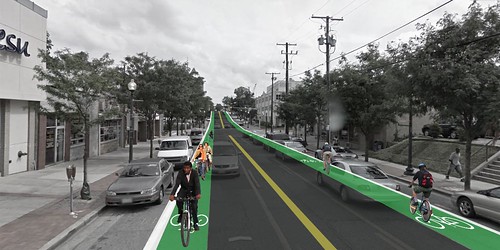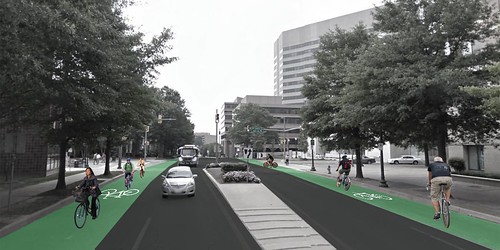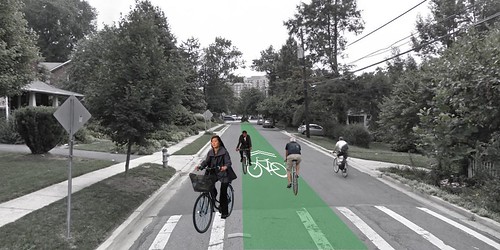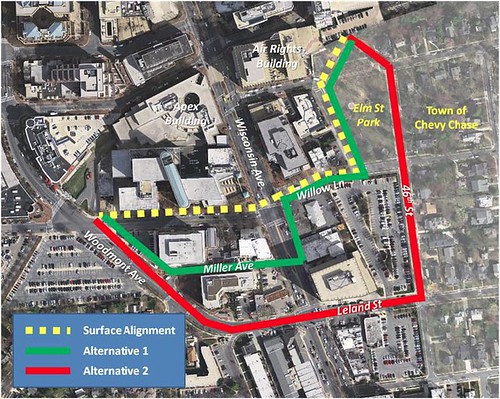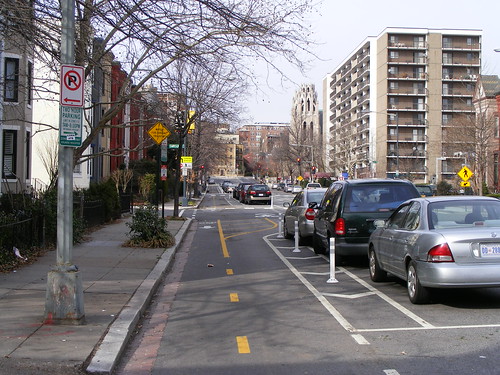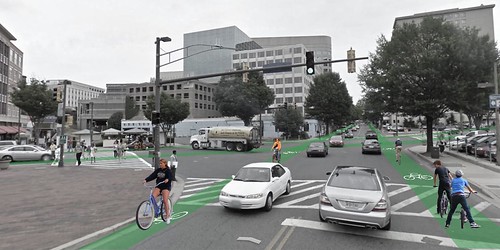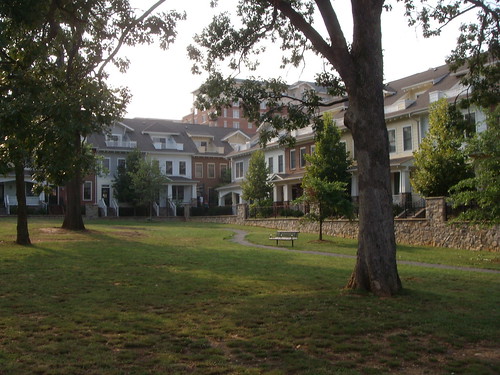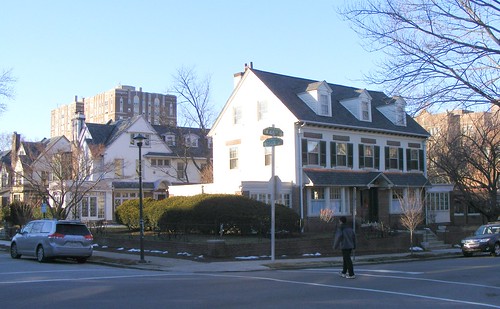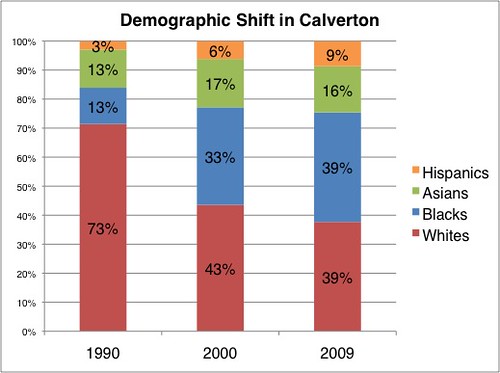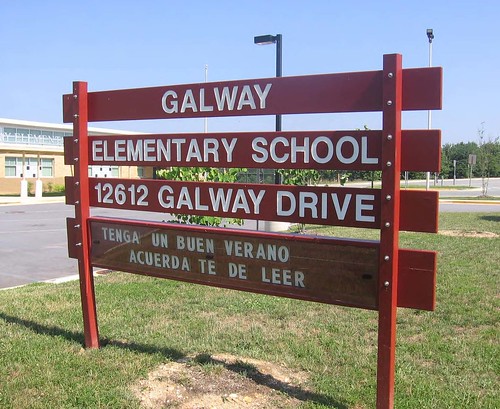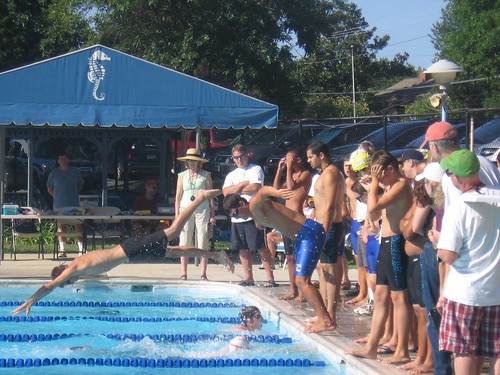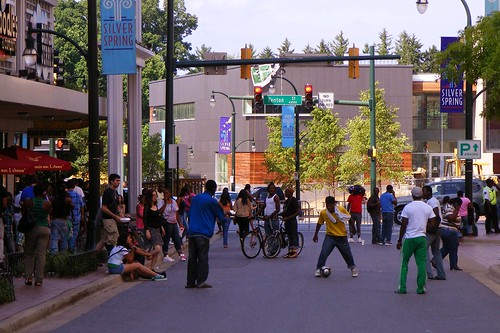I'm currently trying out the ICC as I go home to East County for Thanksgiving. Posting will resume Monday, unless I get bored. If not, I'll see you next week. Happy Thanksgiving!
 Kids goofing off on Bethesda Avenue in downtown Bethesda.
Kids goofing off on Bethesda Avenue in downtown Bethesda.
We assume that kids belong in the suburbs, where they've got yards to play in and great schools to learn in. But it's not a foregone conclusion that good, urban neighborhoods can produce good kids as well.
Twenty years ago,
sociologist Ray Oldenburg wrote in
The Great, Good Place that teenagers are a litmus test for a neighborhood's "vitality":
“The adolescent houseguest, I would suggest, is probably the best and quickest test of the vitality of the neighborhood; the visiting teenager in the subdivision soon acts like an animal in a cage. He or she paces, looks unhappy or uncomfortable, and by the second day is putting heavy pressure on the parents to leave. There is no place to which they can escape and join their own kind. There is nothing for them to do on their own.”
What do teenagers need? The ability to get around without a driver's license, for starters. A 15-year-old who can get around town on foot, on transit, or by bike or skateboard isn't just a convenience for their parents, who don't have to shuttle them around after school. They're given the tools for their own independence and self-discovery. So the ideal place for a teenager is probably a neighborhood with sidewalks and bike lanes, ample public transit, and schools, shops and hangouts located within close range to home. It sounds a lot like Takoma Park, Bethesda, or below-the-Beltway Silver Spring. Rockville, with its
new town center and
excellent bike network, isn't far behind.
Scott Doyon at the
PlaceShakers blog also notes that these places give kids
the valuable opportunity to make mistakes:
For a child, having increasing opportunities to navigate the world around them, explore, invent, fall down, scrape knees, make decisions, screw up, get into — and solve — conflicts and, ultimately, achieve a sense of personal identity and self-sufficiency is a good thing. The right thing.
Of course, kids who can actually get around on their own two feet might do some unsavory things. Some of the kids who walk to downtown Bethesda, for instance, might've gone to
buy drugs at the movie theatre on Wisconsin Avenue. But it's not like the car-bound kids in Germantown and Olney weren't doing that, and it's a lot harder to
hide destructive behaviors when you're not in a two-ton vehicle.
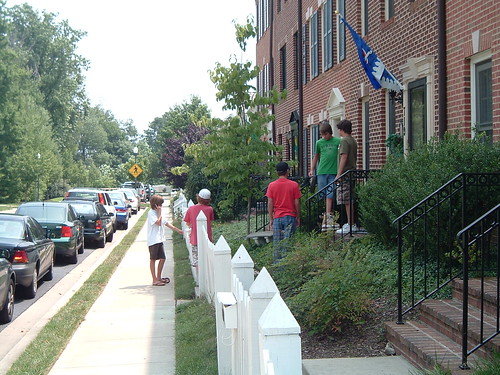 Kids talking on a stoop in Kentlands.
Kids talking on a stoop in Kentlands.
The first time I was allowed to go anywhere by myself was at age eight,
when my family lived in Georgian Towers in downtown Silver Spring. Given, I was only taking the elevator from our apartment to the lobby, but I was so excited I screamed the whole way down. Pretty soon, I could walk to my friends' apartments, across the street to Woodside Park, around the corner to 7-Eleven, and so on. This ended a few years later when we moved to Calverton, where
there's very little within walking distance. But I still knew that I had the power to do things on my own.
My twelve-year-old brother, meanwhile, has spent his entire life in Calverton. When he's not at school, he's at home playing video games, but I've noticed he doesn't have a close group of friends because they don't live nearby. Last year, I took him to walk with
my former boss, Councilmember Leventhal in a parade in Kentlands, one of Montgomery County's few truly walkable neighborhoods.
"Isn't this great, Tyler?" I asked as I took him around Kentlands' Main Street, where we could see kids ducking into shops and hanging out in a little green. "Kids your age who live in this neighborhood can walk to school, to friends' houses, and to the movies! Wouldn't you like that?"
Tyler looked at me like I'd said the sky was green. "Why would I want to
walk?" he replied. "Mom and Dad can just drive me there."
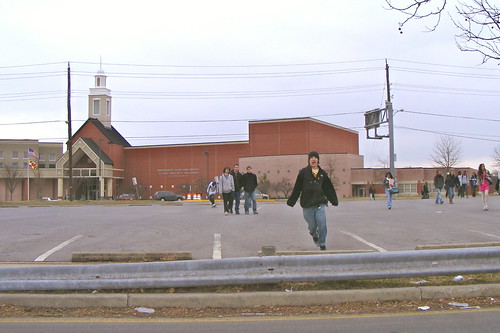 Outside Blair High School on University Boulevard. Kids who have to walk in a place like this likely can't wait to drive.
Outside Blair High School on University Boulevard. Kids who have to walk in a place like this likely can't wait to drive.
As a result, I tend to see most of the issues I write about, from
better bike trails and
infill development to
skateparks and
curfews, from the perspective of kids like my brother. I don't just think that good urbanism can make better communities. I think it
makes better kids: confident, independent, and more aware of the world around them.
We talk about how urban neighborhoods are
drawing young adults and
senior citizens alike. But they have a lot to offer kids and teenagers, as well. That's the great part about good urbanism: it
can work for everyone, regardless of age or situation.






